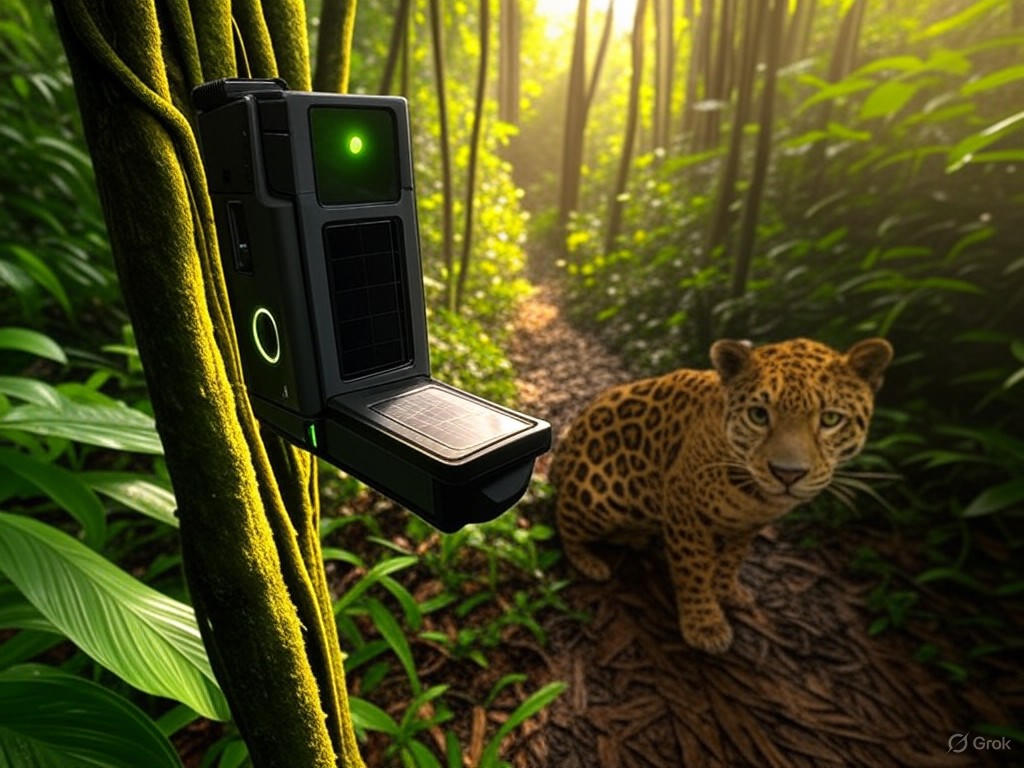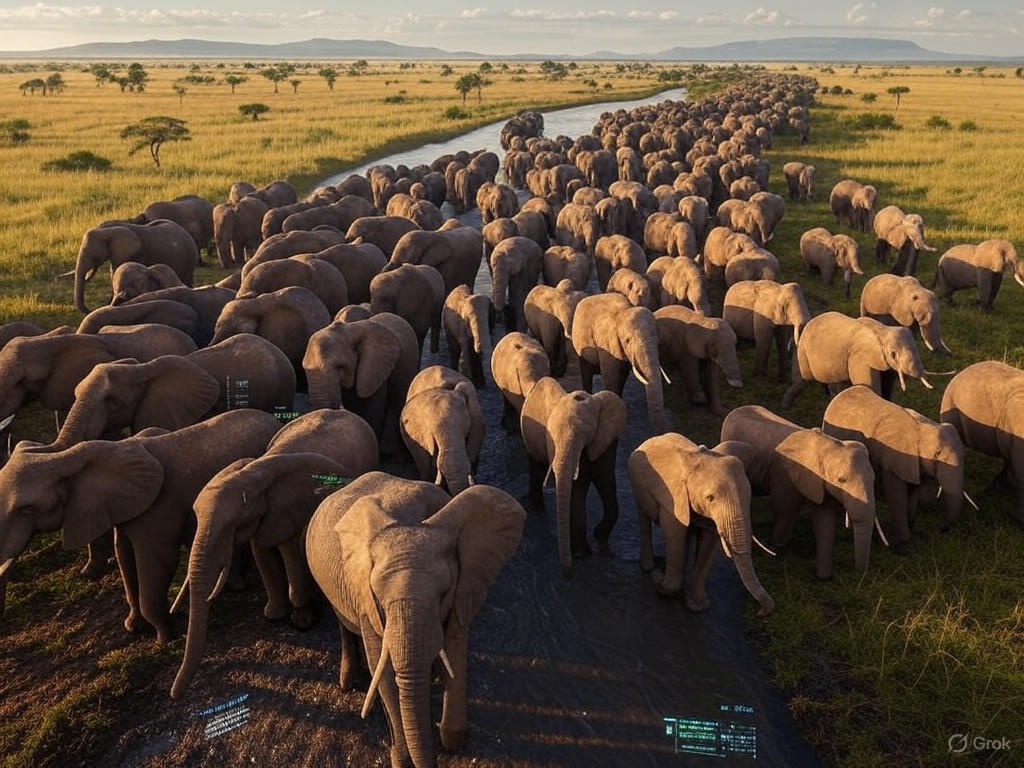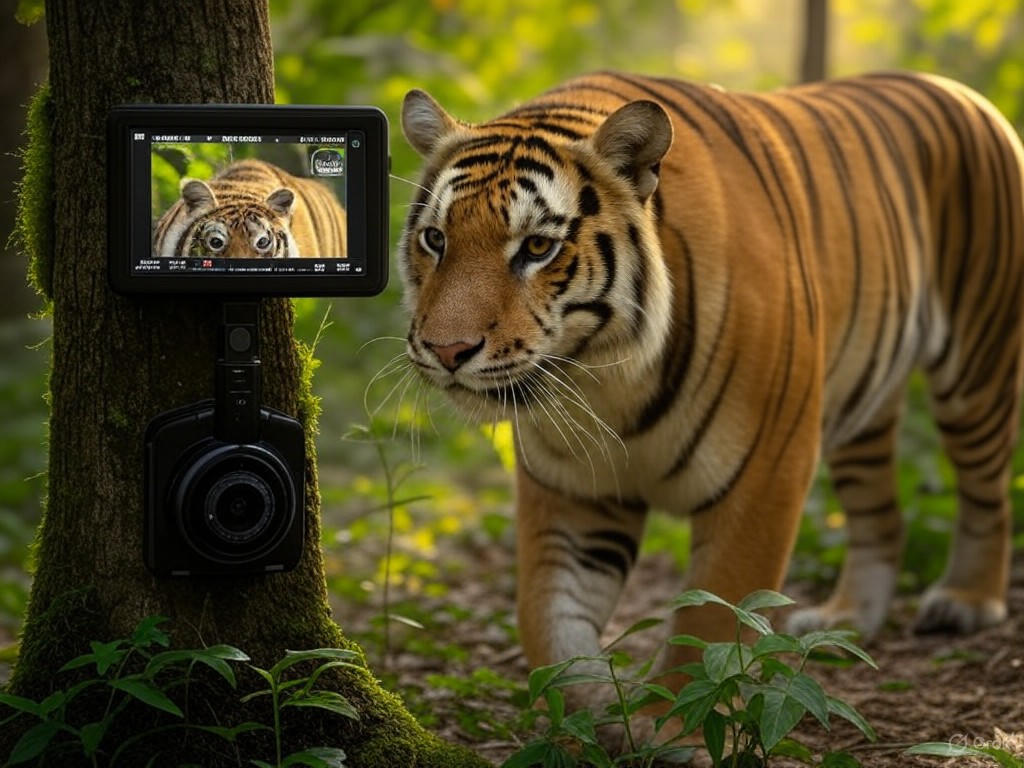AI for Wildlife Conservation: Tracking Species
In an era where the natural world seems increasingly besieged by human encroachment, one might be forgiven for despairing at the plight of our endangered species. Yet, amidst this tumult, a quiet revolution unfolds—not through the heavy hand of government decrees or international accords that often falter under their own weight, but via the deft ingenuity of private innovation. Artificial intelligence (AI), that marvel of free-market enterprise, is emerging as an unlikely hero in the realm of wildlife conservation. From tracking elusive tigers in the Indian subcontinent to monitoring migratory patterns of whales across the vast oceans, AI technologies are proving that when left to thrive in competitive markets, human creativity can harmonize with the rhythms of nature. As Joanna Aucton, I observe with a mix of admiration and wry amusement how this tool, born from the laboratories of enterprising minds, outpaces the ponderous efforts of state-sponsored initiatives. Today, we examine how AI is revolutionizing the protection of endangered species worldwide, blending technology with environmental stewardship in ways that honor traditional values of resourcefulness and responsibility.
The Rise of AI in Wildlife Monitoring: A Market-Driven Marvel
The application of AI in conservation is not merely a technological fad but a testament to the power of free-market solutions. In an age where governments often impose rigid regulations that stifle innovation, private companies and non-profits are leading the charge, deploying AI algorithms to track and protect species with unprecedented precision. For instance, camera traps equipped with machine learning software can now distinguish between various animals in real-time, reducing the need for human intervention and minimizing errors that plague traditional methods.
Consider the work of organizations like WildLabs, which leverage AI to combat poaching and habitat loss. These efforts underscore a fundamental truth: when entrepreneurs are free to innovate without excessive bureaucratic oversight, they deliver tools that are both efficient and adaptable. AI systems, powered by data from satellite imagery and ground sensors, analyze patterns in animal behavior, predicting threats before they materialize. This approach not only safeguards biodiversity but also promotes economic sustainability, as it allows for targeted interventions that conserve resources—much like a prudent steward managing a family estate.
Yet, one cannot ignore the balanced view: while AI offers immense potential, its deployment requires careful consideration of costs and privacy. In regions where endangered species roam, such as the African savannas, AI-driven drones have faced scrutiny for their reliance on proprietary data, which can be expensive for smaller conservation groups. Nevertheless, the market's invisible hand ensures that competition drives down prices and improves accessibility, fostering a more equitable distribution of technology IEEE Spectrum.

An AI-equipped camera trap in the Brazilian rainforest, capturing high-resolution images of jaguars and other wildlife, demonstrating how technology enhances real-time monitoring without disrupting natural habitats.
Analyzing the Evidence: Success Stories and Challenges
Delving deeper, the evidence for AI's role in wildlife conservation is compelling, drawn from a variety of global case studies that highlight its efficacy. In South Africa, for example, AI algorithms integrated with acoustic sensors have reduced rhino poaching by identifying suspicious sounds in protected areas, allowing rangers to respond swiftly Wall Street Journal. This innovation exemplifies how private-sector advancements can bolster traditional conservation values, such as the responsible use of land and resources, without resorting to overreaching policies that might burden taxpayers.
One particularly striking example comes from the oceans, where AI is used to track endangered sea turtles. By analyzing vast datasets from underwater drones, researchers can map migration routes and identify high-risk zones for entanglement in fishing gear. A study by the Marine Conservation Institute reveals that AI has increased detection accuracy by up to 90%, enabling fishers and conservationists to collaborate on voluntary, market-based solutions like gear modifications that minimize bycatch National Geographic. Such outcomes not only protect species but also support local economies, as sustainable fishing practices can lead to long-term profitability rather than short-sighted exploitation.
However, a balanced analysis must address potential pitfalls. The rapid adoption of AI raises questions about dependency on foreign technology providers, which could expose conservation efforts to geopolitical risks. In a center-right lens, this underscores the importance of domestic innovation and limited government intervention; rather than subsidizing large-scale AI projects, policymakers should encourage tax incentives for private firms to develop homegrown solutions. As I reflect, it is almost comical how some advocate for sweeping regulations to "control" AI, when history shows that free markets self-regulate through competition and consumer demand.
The economic implications are equally noteworthy. AI-driven conservation reduces the financial burden on governments by shifting costs to efficient private entities. For instance, in India, AI applications have helped monitor tiger populations at a fraction of the cost of manual surveys, freeing up funds for other public needs WWF International. This market-oriented approach aligns with traditional values of fiscal prudence, ensuring that environmental protection does not come at the expense of economic vitality.

Satellite-derived AI analysis of elephant herds in the Serengeti, illustrating migration patterns that inform anti-poaching strategies and promote habitat preservation.
The Broader Implications: Balancing Innovation and Tradition
As we weigh the evidence, it becomes clear that AI's integration into wildlife conservation represents a confluence of technology and timeless principles. Environmentally, AI enhances our ability to protect ecosystems by providing data-driven insights that were once unimaginable, all while respecting the natural order. Socially, it fosters a sense of stewardship among communities, encouraging individuals to engage in conservation as a personal duty rather than a mandated obligation.
From an economic standpoint, the free market's role is paramount. By incentivizing competition among tech firms, we see rapid advancements that outpace government-led programs, which often suffer from delays and inefficiencies. A report from the Environmental Defense Fund highlights how AI startups have attracted billions in private investment, driving down costs and scaling solutions globally Environmental Defense Fund. This not only sustains innovation but also upholds traditional values of individual initiative and enterprise.
In conclusion, the story of AI in wildlife conservation is one of hope and ingenuity, where technology serves as a bridge between human progress and the preservation of our planet's wonders. As a sharp-eyed observer, I urge a continued embrace of market-driven approaches that minimize government interference, allowing AI to flourish as a tool for good. Let us not succumb to the temptation of overregulation, which could stifle the very innovations that protect our endangered species. Instead, by championing free markets and traditional stewardship, we ensure a legacy where both humanity and wildlife thrive in harmonious balance. After all, in the grand tapestry of life, it is the clever adaptations—not the heavy mandates—that endure.

